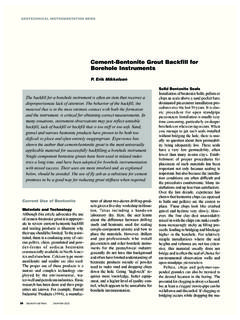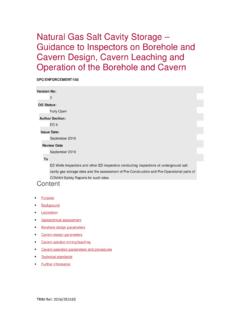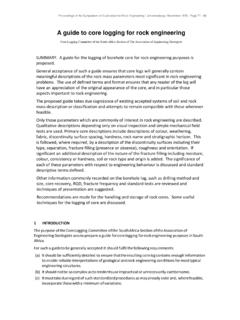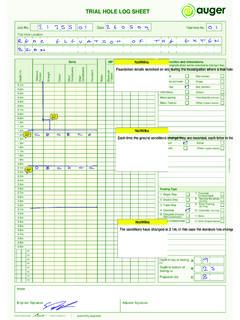Transcription of SELECTING A PUMP FOR YOUR BOREHOLE
1 SELECTING A PUMP FOR your BOREHOLE When choosing a BOREHOLE pump the correct selection will be based on two crucial factors : Flow Rate and Pressure ( or head ). Firstly, determine your volume requirement as cubic metre per hour (m3/h) or litre per minute (lpm), based on how much water you need each day divided by twenty four ( OR by the number of hours per day you wish to run the pump ). ( 1 lpm = ) ( An average household might use in the region of 35 litre per person per day and gardens or agriculture might need in the region of 5 litre per square metre per day though these figures can vary widely in individual circumstances.) It is important not choose a pump that is more than 65% of the capacity of the BOREHOLE established by test-pumping otherwise the BOREHOLE might collapse or the motor can burn out if the BOREHOLE runs dry.
2 Next, look at the vertical head in metre (m) that you will pump : measured from the water level in the BOREHOLE to the point of discharge. If you BOREHOLE has been test-pumped you should know the water level when pumping at your chosen rate otherwise you will have to estimate a draw-down level .. and allow a little more for friction through any great lengths of pipework. NOW take a look at the various pump performance curves you ll find on our website and find a match for your flow rate. As a guide : - Well pumps 4 stainless steel pumps will give flows between and 15 m3/h Felsom 4 pumps will give flows between and 21 m3/h E-Tech 5 Nauti submersible pumps will give flows between and 15 m3/h E-Tech 6 stainless steel pumps will give flows between 6 and 75 m3/h E-Tech 8 stainless steel pumps will give flows between 50 and 120 m3/h ( A bold curve or similar indicates the permissible operation range of each individual pump type.)
3 Finding a chart where the desired flow is a good match for the Best Efficiency Flow ( highest point of the curve ), chose an individual curve which will give ( at least ) the necessary head A010 on the typical pump curve example shown below. You now have a suitable pump for your needs and other than for the Nauti type you will have to select a Franklin motor to suit ( single-phase available up to ). You will also find a variety of starter panels, riser, wellheads and other accessories elsewhere on the website : contact us if you need any further guidance Typical Pump Curve







